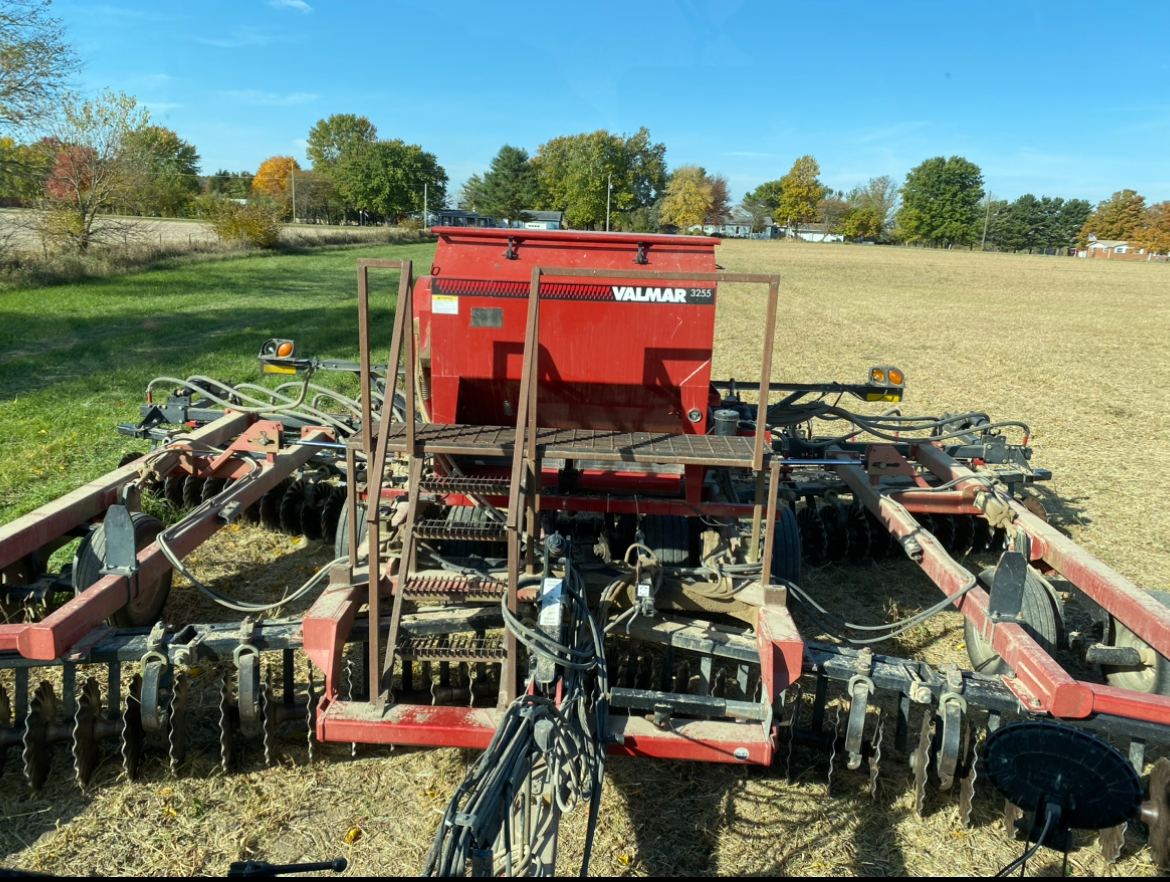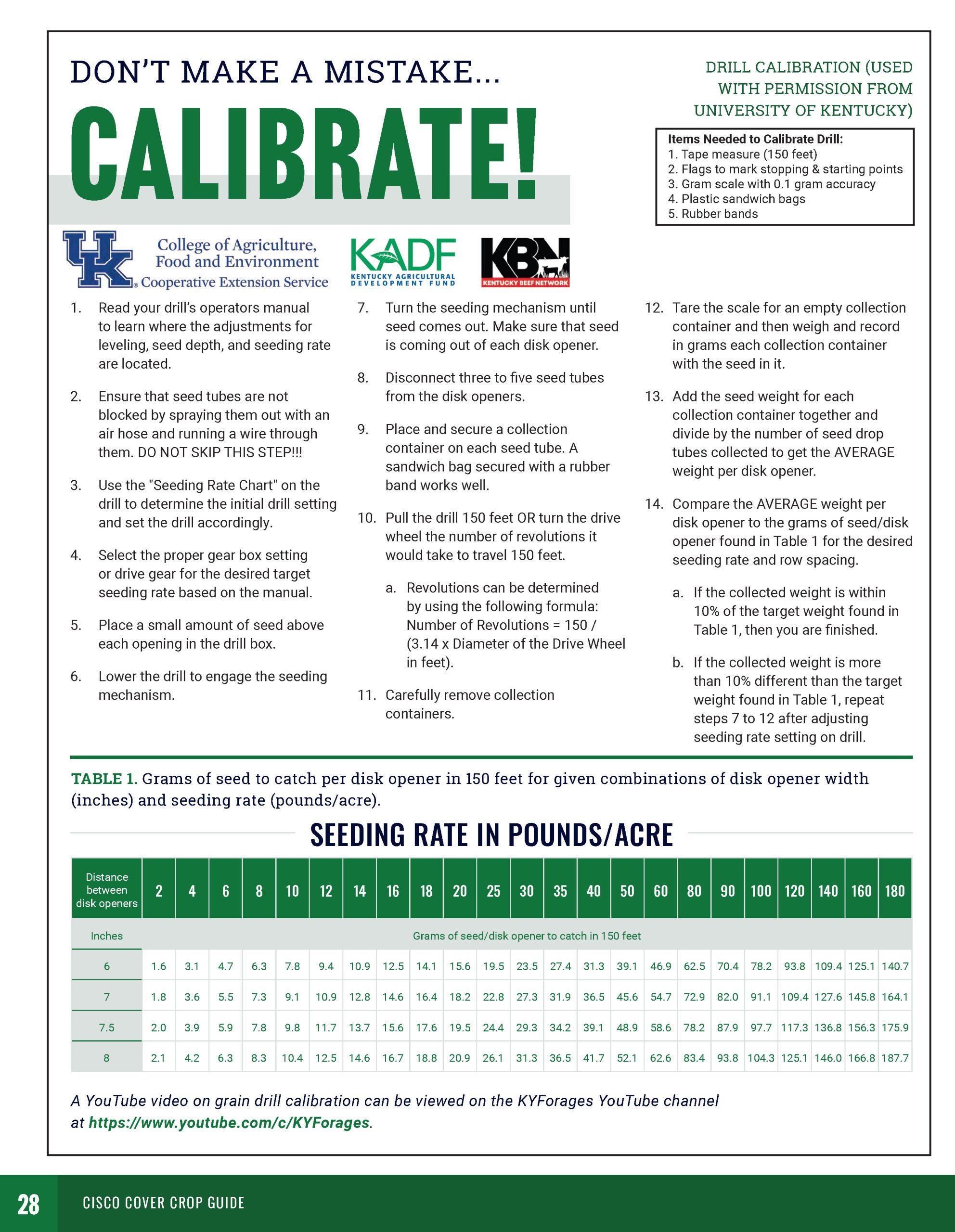Today’s growers are utilizing many approaches to timely seed cover crops – and as efficiently as possible. Here are five methods to consider.
The bottom four methods described below are arguably the most widely employed and normally work well in the Midwest given producers’ cropping systems and equipment availability. However, we will start with a newer concept first.
The Combine Seeder
The “combine cover crop seeder” in the video below seeks to address the time limitation that farmers face when trying to implement a cover cropping system into their management practices.
Drill or Seeder
Using a drill or air seeder is the best approach to encourage adequate seed-to-soil contact and rapid germination.
- Calibrating drills takes time and attention to detail, especially when seeding cover crop mixes that include wide variances in seed
size. See the chart at the bottom of this page for help with calibration – also the video.
- Simply put, using a drill or any pull-type machinery only works post-harvest, therefore seeding windows are shortened.
Broadcasting Post-Harvest (with light tillage)
There are a myriad of practices post-harvest to consider – like combining seed with fall fertilizer applications or placing seeders directly on tillage equipment.
- Increase seeding rates slightly (10-25%) to account for variable soil conditions and uneven seeding depth. Monitor tillage to make sure seeds are not being placed too deep.
- Depending on the broadcasting width and the system in place, double spreading may be needed to produce a uniform stand.
- Frost-seeding uses no tillage but rather leverages freeze-thaw cycles to pull seed into the soil. These applications in winter and early spring work best with small-seeded legumes like clovers, and dense seeds in general. But it’s common for producers to frost seed spring grains as well.
Surface / Aerial Seeding
- Surface seeding using airplanes or drones enables earlier planting. Rainfall events and/or irrigation are critical to the success of aerial seedings.
- Timing recommendation into standing corn = > 50% sunlight penetration to the soil surface.
- Soybeans are tougher to pinpoint, but generally, the best opportunity for success is at leaf senescence. Applications need to occur before leaf drop to maximize seed-to-soil contact.
- Moisture is key. It’s always encouraged to apply seed sooner than later (in that ideal planting window) if/when moisture events
are forecasted (or when irrigation can be arranged).
Interseeding Applications
- A popular practice 100 years ago, interseeding is being considered again to get covers established earlier in standing corn. Applications should be considered at V3 – V6, and although cover crop seeding toolbars are becoming more widespread, broadcast applications are more common.
- Probably a better fit further north in CISCO’s footprint, where shorter seeding windows limit cover crop opportunities.
- Herbicide applications before seeding have a huge impact on establishment success. Non-residual options make the most sense.

